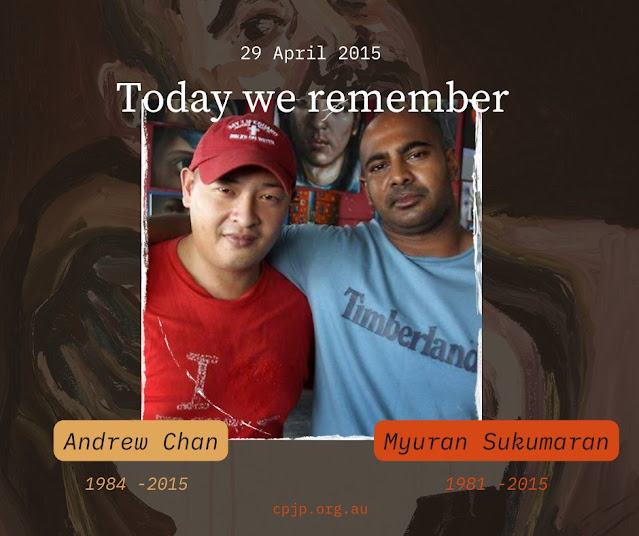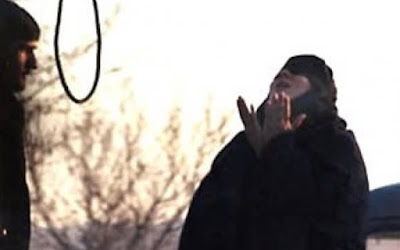Iran Human Rights (Oct 9 2017): Since January 2017, at least 435 people, including 5 juvenile offenders, have been executed according to Iran by Iran Human Rights (IHR) Death Penalty Research Section. At least 219 people have been executed for drug offences so far in 2017.
We celebrate this year's “World Day Against the Death Penalty”, October 10, as the bill for the amendment to Iran's Anti-drug law is about to come to a conclusion. The bill has been approved by the Iranian Parliament, however, it still needs to be approved by the Guardian Council in order to be legislated.
According to this bill, it is predicted that more than 80 percent of nearly 4000 prisoners who are sentenced to death on drug related charges will be saved from execution. Considering the fact that 50 to 60 % of death sentences in Iran are issued for drug related crimes, it seems that this bill will play an important role in decreasing the number of executions if it is approved.
Earlier in 2017, members of the Iranian Parliament's Justice Committee called on the Judiciary to halt the drug related executions until the fate of the new bill is clear. However, the drug related executions in Iran continue as before. So far in 2017 at least 219 have been executed for drug offences.
In 2002, the World Coalition Against the Death Penalty (WCADP) established 10 October as the date of the annual World Day Against the Death Penalty. WCADP has 140 members from 5 continents. Twenty organizations, including Iran Human Rights (IHR), constitute the Steering Committee of this coalition. The role of this committee is to establish general policies and introduce the annual topics of this coalition.
Since in all the countries around the world poor and marginalized people are the main victims of the death penalty, the Steering Committee of WCADP has selected “Poverty” as the topic for this year’s World Day Against the Death Penalty.
There has not been a thorough research on the relationship between poverty and the death penalty in Iran. Although, as Iran Human Rights annual report on the death penalty suggests, most victims of executions are poor and belong to the marginalized parts of the Iranian society, including ethnic regions and Afghan citizens.
Even Iranian officials
have admitted that most of those executed for drug offences are not the real drug dealers but poor and marginalized people who are used as carriers for a small amount of money.
In February 2016, the Iranian Vice-President Shahindokht Molaverdi said in a press conference that " We have a village in Baluchestan Province where every single man has been executed (for drug offences)". Baluchistan is Iran's poorest province.
The reasons why death penalty mainly targets poor people in Iran may include:
First, many people turn to drug trafficking as a result of poverty.
Second, many of these people belong to the lower strata of society, have a low level of education, and are unaware of their legal rights.
Third, most of these people do not afford to have a lawyer of their own choice and other legal and illegal facilities which require affluence in Iran’s judicial system in order for them to be saved from execution.
It seems that poverty and being marginalized rather than the extent of the crime, are the common denominators for most victims of the death penalty in the world. In the few countries where such research has been conducted, researches have shown that if a poor and a wealthy person both commit a similar crime, the probability of the poor being sentenced to death is much higher. Thus, the death penalty is not only inhumane, but also unfair and discriminatory as it does not depend on the intensity of the crime, but on the socio-economic factors.
Source: Iran Human Rights, October 10, 2017
Annual Report on Execution in Iran - 2017
On the anniversary of the International Day of Fighting against People's Execution, The Department of Statistics and Publications of the Human Rights Activists in Iran publishes
an annual report on executions in Iran (pdf).
This report is intended to provide visibility to the dire situation where thousands of people are awaiting execution. The present report concerns the individuals executed in the 1 year period from 10 October 2016 until the beginning of October 2017 and refers to at least 508 people executed in different parts of Iran by hanging.
The report shows a rise by about 1% in the number of executions compared to the same period last year.
Most of these individuals had been condemned to death in unfair courts and deprived of access to lawyers. Moreover, this report shall not be considered an accurate and comprehensive estimate since the Iranian government has placed enormous restrictions on human rights related activities and independent human right organizations.
Since October 10th, 2016 to the beginning of October, 2017, this organization published 381 reports regarding the executions in Iran.
These reports include a total of 223-execution decrees out of which 508 individuals have been already executed. Out of the 508 executions, a total of 32 people were executed in public. Among the victims whose identity has been established, there were 6 women, and the age of 6 individuals was under 18 years at the time they committed the alleged crimes.
In comparison with the number of executions in the same period last year, there has been a 1% rise in the number of executions but also a 62% increase in the number of execution decrees.
The number of public executions has fallen by 5% over the same period, and execution of women has also shown a 33% decline.
According to this report, 57% of the executions were related to the charges of drug trafficking, 36% for murder, 4% for rape, 2% for political charges, and 1% for miscellaneous cases.
The following pie chart illustrates the number of executions in different provinces of Iran. The graph shows that the province of Alborz with 3 most populated prisons and 25% executions comes in the 1st place, and provinces of West Azerbaijan and Gilan with 11% and 6% are in the 2nd and 3rd places, respectively.
According to this report, the number of public executions has been 6% of the total number of executions as shown in the following figure.
The following graph shows the number of executions reported by independent human rights organizations, which is estimated to be 82% of the executions carried out covertly.
Source:
HRANA, October 10, 2017
Iran: Man Executed For Drug Offences
Iran Human rights (Oct 8 2017): A prisoner was executed at Qazvin central prison on drug related charges.
According to the Iranian state-run news agency Mehr, on the morning of Sunday October 8, a prisoner was executed at Qazvin Central Prison. This prisoner was sentenced to death for drug related charges.
“The defendant, Reza N., was sentenced to death on the charge of possessing 11 kilograms and 490 grams of meth. After the sentence was confirmed by the Attorney General, it was carried out on the morning of Sunday October 8, while a number of judicial authorities, the Head of the Penitentiary of Qazvin, the Police representatives, and the forensic physicians were present,” said Esmaeil Sadeghi Niaraki, the Public and Revolutionary Prosecutor of Qazvin.
Sadeghi Niaraki added, “The defendant’s case went to court and the execution sentence was carried out by the Section for Implementation of Sentence of Public and Revolutionary prosecutor’s office of Takestan.”
Kurdistan Human Rights Network identified the executed prisoner as Reza Naalbandi, son of Ali, from Tabriz (Northwestern Iran).
The execution of prisoners with drug related charges continues to be carried out in Iran despite the fact that the bill for the amendment to the drug law in Iran has been approved by Iranian Parliament. However, the Guardian Council must still approve the bill.
Source: Iran Human Rights, October 8, 2017
⚑ | Report an error, an omission, a typo; suggest a story or a new angle to an existing story; submit a piece, a comment; recommend a resource; contact the webmaster, contact us:
deathpenaltynews@gmail.com.
Opposed to Capital Punishment? Help us keep this blog up and running! DONATE!
"One is absolutely sickened, not by the crimes that the wicked have committed,
but by the punishments that the good have inflicted." -- Oscar Wilde















